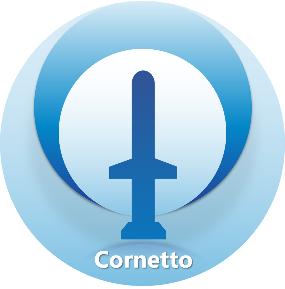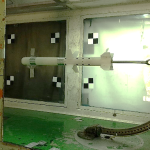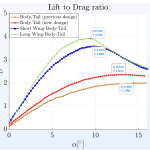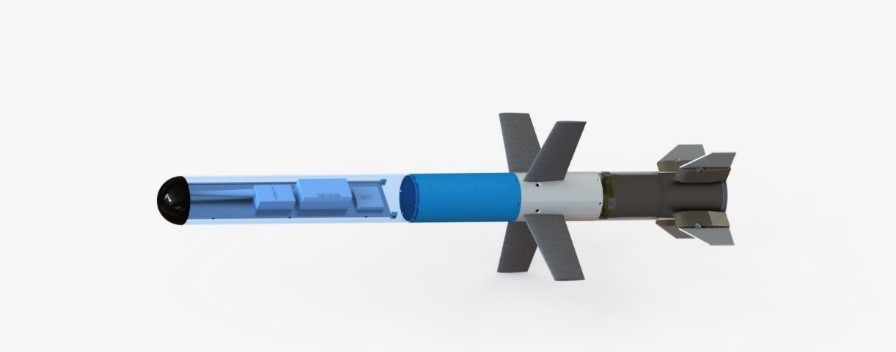Project Cornetto, second year
- : Efi Kelmer, Lior Isakov, Amen Daher, Tamir Elbaz, Doron Potsdam, Lior Yosufov, Dan Heinrich & Boaz Gavriel.
- Shlomo Shpund

Project Objective: This missile is designed to be a reusable platform for testing and studying different guidance systems inside the missile and tracking systems on the ground.
Missile Requirements:
- Reach the height of at least 1500 [m] by a ballistic launch, with a given propellant (with roll controll).
- The missile should achieve the longest distance possible by gliding and keeping controlled route with guidance.
- The missile needs to be aerodynamically stable and withstand all the anticipated loads during flight.
- Traced from the ground with the help of navigation systems.
- The missile should fit the launcher designed by TUM University.
- The nose of the missile will carry different payloads.
- The missile will have salvaging system, making it reusable.
The group that developed this project is made of eight students who met once a week in an organized fashion along with the advisor. The students split up according to the following disciplines:
- System Engineering
- Aerodynamics
- Propulsion
- Structure
- Control & Guidance
- Navigation
The above groups convened throughout the first semester.
But, as progress was made, and some topics were done, some of the crew members moved to other disciplines in order to help the rest of the crews.
At the beginning, we focused on understanding all that has been done in the first year, which was the primary design of the missile. Then, we focused on improving the range of the missile in the cruising phase, detailed design of the rocket motor, designing the controls for the missile’s rudders, fixing the flight simulation, detailed design of the missile’s structure and salvaging system, and navigation system.
The Missile’s final aerodynamic configuration is a wing-body-tail with a spherical nose – compatible with spherical nose (that suits optical guiding systems), long thin wings and trapezoid tail controls. The primary design was just body-tail configuration but the addition of the wings multiplied its range by at least 2 – a result confirmed in a wind tunnel experiment. The missile will fly in an ‘X’ configuration.
The motor of the missile was designed to be a reusable motor, where the propellant is the only thing that needs to be renewed. The propellant is given to us by Rafael, and burns ‘inside burn’ and ‘tip burn’ for 2 seconds, and generates 700 [N] of thrust.
The missile is controlled by four trapezoid tail controls each is independent and has its own servo. At the launching phase the missile will be controlled only for roll, and during the cruising phase for pitch and yaw.
the missile has a guiding system which will deliver the necessary commands for the controls.
The missile will navigate with information it will receive from the flight computer ‘Pixhawk 2’, and from a GPS system that will be installed inside the missile.
The detailed structure of the missile needs to contain all the missiles components while withstanding the loads and stresses and not exceeding the weight limitation (5.5 Kg).
The missile will be salvaged at the end of the cruising phase by deploying a parachute, and is collected afterwards for data analysis and reuse.
During the project we used the following softwares:
- Missile Datcom for calculations of the aerodynamic coefficients.
- SolidWorks, to build the missile detailed model, the missile’s motor, the wind tunnel model and to get a strain analysis.
- Matlab and Simulink were used for building the various simulations and testing the missile control, and calculations of the aerodynamic coefficients (mainly in VLM method).
After the calculations and estimations of the aerodynamic coefficients we committed a wind tunnel experiment to confirm our estimations, and to prove the improvement of the new aerodynamic configuration.
A 6-DOF simulation that was build enabling integration of the aerodynamic properties with the control and guidance systems, allowing us to learn on each of the missiles flight phases.
To summarize, in the second year the aerodynamic configuration and design was complete including a wind tunnel test, the detailed design of the missile’s motor was complete not including an experiment, the design of the simulation and the controls was complete and is ready to be integrated with the navigation system.
The majority of the missiles detailed structure design is complete, and there is a primary design for the parachute.
in the following year there will be a need to finish the structure, the parachute, and the navigation system.
Also, interrogating the performance of the missile with the simulation and building a mockup model to make sure all the components and elements of the missile fit together.












